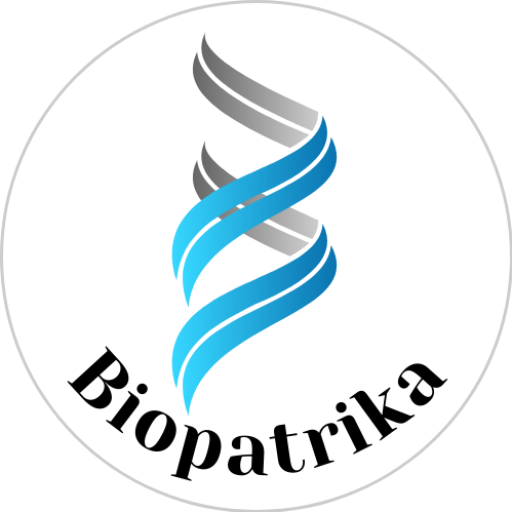Dr. Pratima Pandey obtained her Ph.D. from CSIR-Institute of Microbial Technology, where she studied halotolerant mechanisms in the highly halotolerant yeast Debaryomyces hansenii. After her Ph.D., she joined Dr. Lynn Boyd’s lab at the University of Alabama Huntsville, USA, where she used the invertebrate Caenorhabditis elegans to study the neurological disorder Huntington’s disease. This experience sparked her long-standing interest in neuronal studies using this model organism. Before joining Dr. Kavita Babu’s lab at IISER Mohali, she worked with Dr. Harbinder Singh Dhillon at Delaware State University, USA, and began studying dopamine signaling pathways in C. elegans. At IISER Mohali, she investigated the molecular mechanisms of neurotransmitters and their receptors at C. elegans synapses and neuromuscular junctions. Her long-term goal is to understand how neurotransmitters cross-modulate each other in response to environmental interaction and internal homeostasis.
Anuradha Singh is a Ph.D. candidate in Neuroscience in Dr. Kavita Babu’s lab at the Indian Institute of Science Education and Research (IISER), Mohali, India. Her research focuses on understanding the role of DOP-2, a dopamine autoreceptor, in ethanol-dependent locomotion in Caenorhabditis elegans. She holds a Master of Science in Molecular and Human Genetics from Banaras Hindu University, Varanasi, Uttar Pradesh, India.
The first authors discuss their work published in PLOS Genetics.
Author Interview
How would you explain your paper’s key results to the non-scientific community?
This is the story of alcohol-sensitive worms who, when exposed to alcohol, lost their usual movement and began dragging themselves in circular paths. Alcohol, beyond its addictive nature, contributes to many health issues, such as obesity, fatty liver, oral cancer, and mental/emotional damage. In many organisms, alcohol intake increases dopamine release, activating the reward pathway and affecting control over movement, sex, and speech.
Using C. elegans, a tiny yet genetically rich and well-conserved model organism, we studied alcohol’s effect on movement via dopamine. When the gatekeeper of dopamine balance—DOP-2 (a dopamine autoreceptor)—is missing, dopamine is uncontrolled, leading to muscle hypercontraction. As a result, the worms dragged themselves instead of performing their normal wavy locomotion. This could explain why intoxicated individuals fail sobriety tests.
What are the possible consequences of these findings for your research area?
The dopamine system in C. elegans is simpler than in mammals, which made it easier to study the dopamine-ethanol connection. The organism is increasingly being used to investigate addiction and neurological diseases involving substances like cocaine, methamphetamine, caffeine, and alcohol. While DOP-2 had been known to be present in dopamine neurons, its functional role was elusive.
By deleting DOP-2 and exposing the worms to ethanol, we discovered a new behavior called Ethanol Induced Sedative (EIS) behavior. This behavior helped us understand how increased dopamine levels affect motor neuron signaling via the DOP-1 receptor and the neuropeptide NLP-12, ultimately leading to muscle hypercontraction. EIS behavior can now be used to screen drugs or conditions that regulate dopamine signaling, with potential applications in treating dopamine-related disorders.
What was the exciting moment (eureka moment) during your research?
The turning point came when we observed that ethanol-exposed DOP-2 mutant worms left behind circular tracks. The usual movement seen in wild-type worms was missing. This led to the realization that we had found a phenotype and an assay to study DOP-2. With continued experiments, we discovered the pathway: dopamine levels rise with ethanol, and in the absence of DOP-2, they activate DOP-1 receptors, triggering NLP-12 release, which overstimulates motor neurons via acetylcholine. The worms’ tails dragged, indicating posterior muscular dysfunction.
Collaboration with Dr. Anidya Ghosh’s lab at NBRC helped us laser-ablate specific neurons in the transparent worm to confirm the circuitry. The results showed that PDE dopaminergic neurons signal to DVA interneurons, which then regulate motor neurons. The absence of DOP-2 led to increased signaling and EIS behavior.
What do you hope to do next?
Our work lays the foundation for studying the post-withdrawal effects of chronic ethanol exposure. The alcohol concentrations we used are comparable to human drinking levels. Our behavioral assay is simple and useful for drug screening to identify molecules that increase dopamine levels—relevant for dopamine-associated disorders. Since alcoholism can be hereditary, we also plan to study the transgenerational effects of ethanol exposure and use this knowledge to combat Alcohol Use Disorders (AUDs) in humans.
Where do you seek scientific inspiration?
My inspiration comes from the desire to seek answers. I am curious about behavior and its roots. Each small successful experiment fills me with joy, and failed ones drive me further. Being in Dr. Babu’s lab has been enriching—surrounded by bright students and engaging in exciting scientific discussions. Anuradha Singh, a dedicated graduate student, worked closely with me and played a key role in completing this project. Dr. Kavita Babu has been an outstanding mentor, offering support and freedom to explore ideas. Her enthusiasm and guidance helped shape both the research and my personal growth.
How do you intend to help Indian science improve?
It is crucial to foster scientific curiosity early in education. While initiatives like tinker labs help, more must be done. College biology students need access to research infrastructure or opportunities to work in established labs. India needs increased investment in scientific development, timely funding, mentoring for young researchers, and a responsive ecosystem that values feedback from scientists.
Reference
Pandey P, Singh A, Kaur H, Ghosh-Roy A, Babu K (2021). Increased dopaminergic neurotransmission results in ethanol dependent sedative behaviors in Caenorhabditis elegans. PLOS Genetics, 17(2): e1009346. https://doi.org/10.1371/journal.pgen.1009346
Explore more
🎤 Career – Real career stories and job profiles of life science professionals. Discover current opportunities for students and researchers.
💼 Jobs – The latest job openings and internship alerts across academia and industry.
📢 Advertise with BioPatrika – Reach the Right Audience, Fast!




